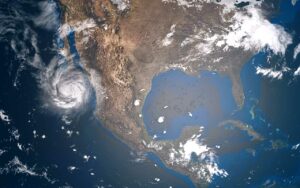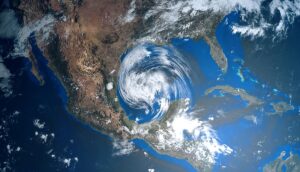Severe air pollution is no longer limited to China or places well known for their smog, like Los Angeles. The WHO says 99 percent of the global population is now breathing air that exceeds safe limits.
Almost the entire world breathing unhealthy air, WHO says
The World Health Organization (WHO), a health agency of the United Nations (UN), says that the limits it established for air quality safety are being exceeded by 99 percent of the entire global population the WHO stated on Monday.
The WHO tweeted on Monday: “Shocking! 99% – or almost the entire world’s population breathes air with unhealthy levels of fine particulate matter & nitrogen dioxide, and threatens their health.”
According to the WHO, air pollution kills 7 million people worldwide every year.
Air pollution harmful at lower levels than previously believed
Of chief concern is particulate matter, known as PM2.5, which can enter the bloodstream, and nitrogen dioxide (NO2), both of which are common urban pollutants, news.UN.org reported. The WHO is urging governments to take note that it has made significant revisions to its air quality indicators in light of these dangers, especially as it has learned that lower levels of air pollution are more harmful than previously believed.
While low and middle-income countries experience greater exposure to unhealthy levels of particulate matter, the patterns of nitrogen dioxide are, according to the WHO: “Different, showing less difference between high and low and middle-income countries.” In other words, it is affecting nearly the entire global population.
“It has been recognized that air pollution has an impact at a much lower level than previously thought,” said Dr. Sophie Gumy, Technical Officer at WHO’s Department of Environment, Climate Change and Health. “With all the new evidence that has come up over the last 15 years since the last WHO air quality guideline update, most of the values of the guidelines levels have been reduced.”
“[NO2] is a proxy indicator for traffic, and it’s telling us what is happening at the urban level and how this gas that we know is so damaging and causing so many respiratory diseases,” Dr. Gumy said. “One of them being asthma – is increasing in many cities around the world.”
What constitutes air pollution?
Air pollution is defined as any chemical, physical or biological agent that modifies the natural characteristics of the atmosphere. It can also be a combination of these things in the air. The most common sources of air pollution are motor vehicles, industrial facilities, household combustion devices, and forest fires.
The main pollutants include particulate matter, carbon monoxide, nitrogen dioxide, sulfur dioxide, and ozone.
7 million deaths annually: Air pollution “an invisible danger”
According to the data the WHO gleaned in their study, air pollution presents an invisible danger to nearly the entire global population.
“4.2 million people die from exposure to outdoor air pollution, in addition to the 3.8 million whose deaths are linked to household smoke produced by dirty stoves and fuels,” according to the agency’s data posted on the WHO official site.
Modeling performed by the WHO using available air pollution data based on 80 percent of the world’s urban areas, nearly every living human being faces an increased risk of heart disease, lung disease, stroke, cancer, and pneumonia due to air pollution.
Because air pollution represents an invisible danger, momentum toward improving air quality has been increasing everywhere in the last decade. The UN agency says that more than 6,000 cities in 117 countries actively monitor air quality an increase from 1,100 cities and 91 countries only a decade ago.









